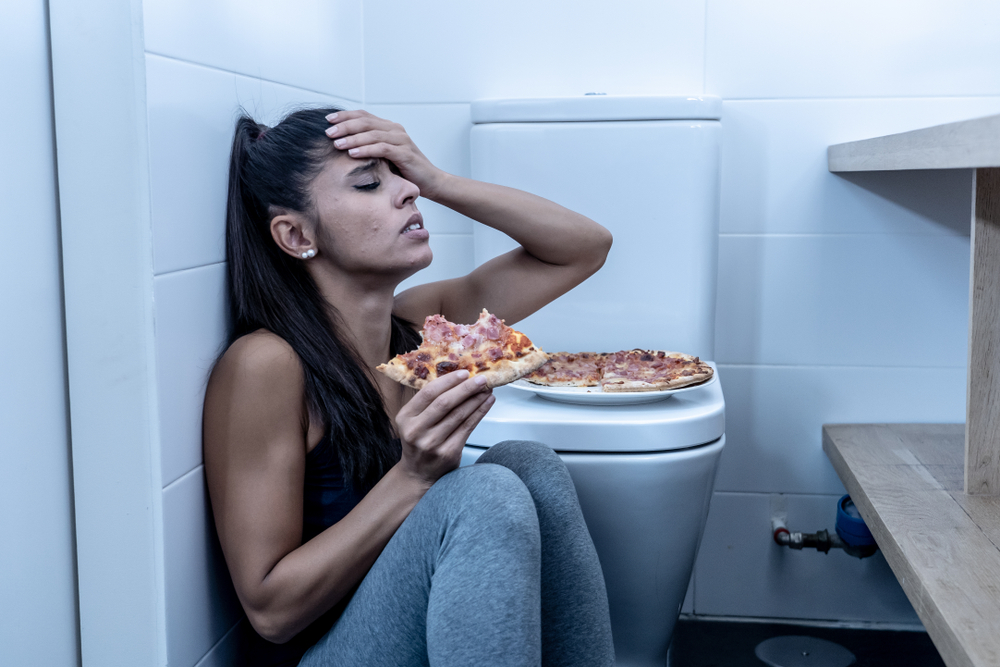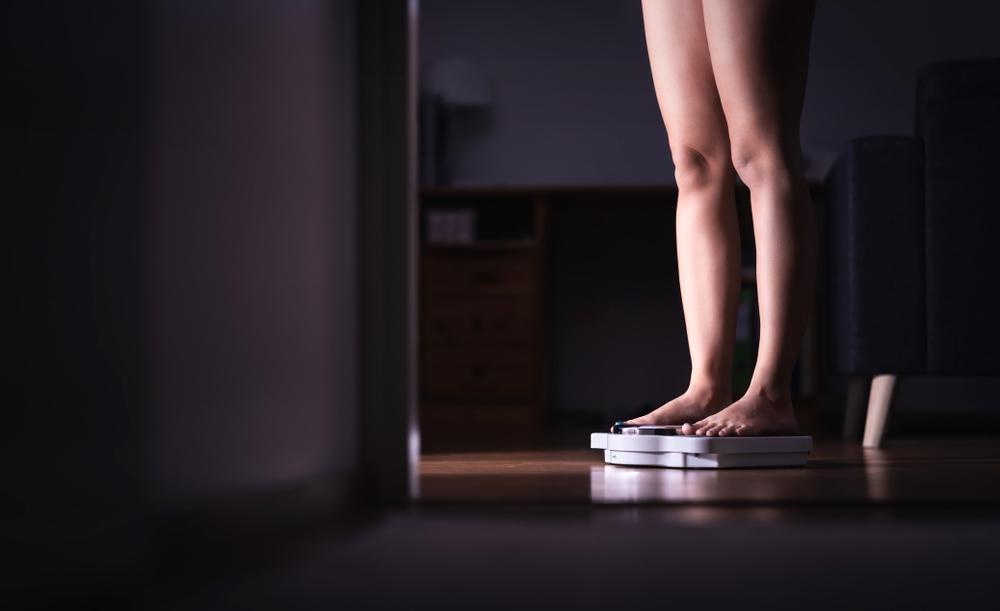Pro-ana websites and pro-ana groups on places like Discord have become a concerning online phenomenon. These communities revolve around the promotion of anorexia nervosa as a lifestyle, rather than recognizing it as a serious mental health condition.
This article delves into the nature and risks associated with pro-ana websites, exploring their impact on vulnerable individuals and the broader implications for mental health awareness.
At EDRS, we believe that It is essential for parents, educators, and mental health professionals to understand the allure and dangers of these websites and online communities in order to counteract their influence and provide appropriate support to those who may be at risk.
What Are Pro-Ana Websites and Pro-Ana Communities
Pro-ana websites and groups are online communities that promote living an anorexic lifestyle. They often give readers tips on how to “trick” concerned parents/partners/friends that you’re eating and gather like-minded people together to talk about the lifestyle of being “super thin.”
Pro-ana websites actively promote anorexia nervosa, reframing it as a lifestyle rather than acknowledging it as a severe mental health condition. These platforms, often operating under the guise of online communities, advocate extreme thinness as an ideal and provide harmful tips for achieving and maintaining dangerously low body weights.
The dangers of these pro-ana websites extend beyond promoting unhealthy body images; they also contribute to the normalization of disordered eating behaviors which impacts vulnerable individuals who may be seeking validation or belonging.
As a concerned loved one, knowing the risks posed by these online communities is critical to understanding the support and appropriate intervention your loved one may need and where they are at the greatest risk for relapse.
What Is Pro-Mia?
“Pro Mia” is an extension of the pro-ana subculture and represents those who seek bulimia nervosa as their chosen lifestyle. Pro-mia followers seek out both extreme thinness and many of the harmful practices associated with bulimia. Pro-mia communities often share tips and strategies on purging and masking the side effects of purging behaviors.
It’s crucial to recognize that pro-ana and pro-mia websites often intertwine, creating a dangerous culture that promotes the values of both anorexic and bulimic behaviors. Both communities place premium importance on extreme thinness and whatever it takes to achieve that body type.
Because many people with disordered eating behaviors fluctuate between disorders, being a part of a special community that “gets” their desire to be super thin makes untangling from these communities particularly difficult.

Where is Pro-Ana or Pro-Mia Online?
Navigating the internet, you may encounter pro-ana content on various online platforms, from websites to social media. Most perpetuate a harmful subculture that glamorizes unrealistic body image values and encourage behaviors that are potentially harmful and toxic for your teen. It’s crucial for parents, guardians, and educators to be aware of these platforms and take preventive measures.
Here are some places where pro-ana content can be found:
Pro-ana websites: The number of websites promoting this kind of content have been shrinking, making websites whose sole purpose is pro-ana or pro-mia harder to find. This is both concerning and positive at the same time. Many communities have gone underground and you need to find them using online communities like Discord or social sites like Tiktok or Instagram.
Pro-ana Kik Channels: Kik, a messaging app, has been known to host pro-ana channels where individuals share content, tips, and provide support for disordered eating. These channels often act as clandestine communities, fostering a sense of camaraderie among those engaging with harmful behaviors.
Googling “pro-ana Kik app” at the time of publication revealed many concerning messages as well as direction to some of these communities.
Pro-ana Instagram accounts: Watch for Instagram accounts that post content (images, quotes, and tips) that glorify extreme thinness. These accounts may attract vulnerable individuals seeking validation, creating an unhealthy echo chamber of distorted body ideals.
Pro-ana X (Twitter) accounts: Like Instagram, X accounts that promote extreme thickness, pro-mia or pro-ana tips are out there. Look for tweets that contain harmful tips, encourage extreme weight loss, and discussions about disordered eating behaviors.
Parents and guardians should actively monitor their teens’ online activities especially if you observe your teen exhibiting behaviors that lead you to believe they may have either the start or an ongoing eating disorder.
If you’re worried, seek out the help from either a mental health professional or reach out to us for support. Our mental health therapists and eating disorder professionals can support you in a recovery plan.

The Lure Of A Pro-Ana Or Pro-Mia Community Cannot Be Overstated
Being ultra thin is a cause for alarm, so finding ways to mask anorexia behaviors, finding tips, insights or advice about being super thin, and how to hide behaviors or side effects from doctors or mental health providers is how the community charms its members.
After all, talking about such topics is not possible in regular conversations. Meeting with other people who share the same desire to be ultra thin has a huge allure.
At the time of writing this article, many pro-ana websites have been removed from search, but there are many private pro-ana groups on places like Discord that people apply to participate in for the same type of connection. Searching on Google won’t find the sites for you easily, it’s often a “who you know” kind of community
What To Do If My Teen Is Looking At Pro-Ana Websites?
#1 Talk to your teen about their eating and eating behaviors
Before talking about pro-ana sites, you need to have an open, non-judgmental, and loving conversation with your teen about their eating and eating behaviors. What have you observed? What facts do you have that take your “opinion” into “fact” territory? And timing matters. Consider having your discussion in a non-threatening way so your teen has the best opportunity to open up about what’s really going on.
#2 Share what you observed or witnessed with their online behavior
Have you seen them in communities or on websites that are concerning? Ask what they know about pro-ana or pro-mia websites? Listen for defensiveness and when it arises, transition to expressing concern and offering support. By creating a safe space for your teen to share their feelings and concerns, you move out of the “bad guy” role and into the support role.
#3 Talk to a mental health professional
Seeking professional help is crucial if you suspect your teen is exploring pro-ana websites or communities. Typically if you observe both your child’s weight loss/extreme focus on their eating habits or other red flag that an eating disorder is brewing AND you see them on a pro-ana community, that’s the time to seek outside help.
Connect with a mental health professional, such as a therapist, counselor, or psychiatrist, who specializes in eating disorders. A trained professional will offer you guidance to help your teen get into counseling and/or offer appropriate interventions tailored to your teen’s situation and condition.
With eating disorders, early intervention is key so you address issues and prevent the escalation of harmful behaviors.
#4 Monitor your teen’s online activity and set boundaries
No teen wants to be told they “can’t visit their favorite website” or have their online privileges reduced. But, as a parent, setting a boundary on unhealthy websites or communities is fully within your rights. You make this easier (although it may never be easy) by setting clear boundaries regarding internet usage and discussing responsible online behavior.
Consider utilizing parental controls or monitoring tools to track their online engagement. And, always encourage positive online spaces that promote body positivity and mental well-being.
#5 Foster healthy body images at home
Encourage positive conversations about body image, self-worth, and individual strengths. Emphasize the importance of embracing diverse body types and avoiding unrealistic beauty standards. Body types change with age, stress and growth. By creating a supportive and affirming environment at home, you start to counteract the negative influences your teen may encounter online.
#6 Encourage their friends to step in
By encouraging your teen to spend time with friends and peers who prioritize a healthy and positive outlook on body image, you start to reset the standard on what is normal. Help your teen find activities that promote self-expression, confidence, and overall well-being. It’s amazing how positive peer influence can play a crucial role in shaping attitudes and behaviors.
Remember, addressing the issue with empathy and understanding is essential. If you are unsure about the best course of action, consult with professionals who specialize in adolescent mental health for personalized guidance and support.
When you take time to explore pro-ana or pro-mia websites or communities, it’s upsetting for sure. Knowing that some people choose to promote content that glamorizes anorexia nervosa as a lifestyle rather than acknowledging it as a severe mental health disorder is a real eye-opener.
You need to know that these platforms, found on various websites, Kik channels, Instagram, Twitter, and more, pose significant risks by normalizing disordered eating behaviors. Recognizing these dangers is crucial for fostering awareness and promoting a counter-narrative against harmful online influences.
If you or someone you know is grappling with the challenges of an eating disorder influenced by pro-ana or pro-mia content, take the first step toward recovery today.
Please click here or click the button above or in the footer to schedule a free, confidential consultation with a member of our team. You never know when a call like this is just what’s needed to save the life of someone you love.

